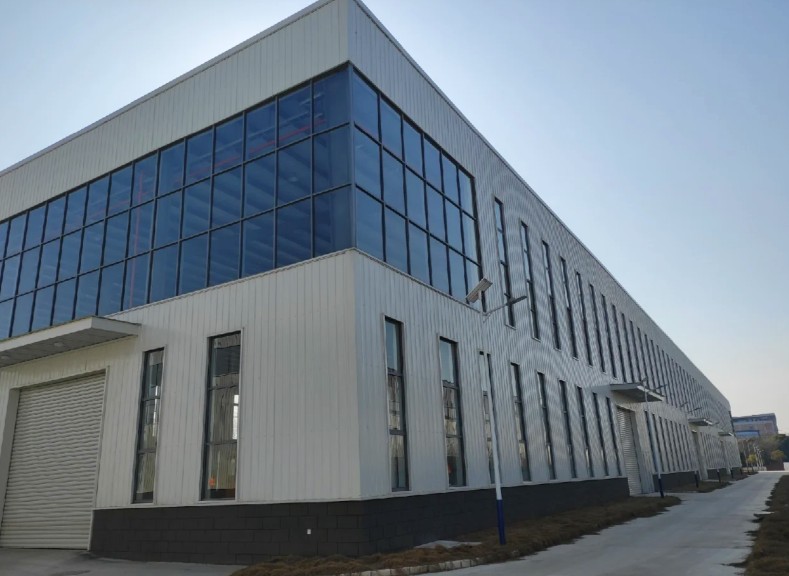What Are the Pros and Cons of Steel Structure Buildings

With the rapid development of modern construction technology,steel structure buildings are becoming increasingly popular worldwide.From factories,warehouses,and airport terminals to shopping malls,office buildings,and stadiums,steel structure buildings are almost ubiquitous.
So,what makes steel structure buildings so widely used?What are their limitations?This article will explore the advantages and disadvantages of steel structure buildings from the perspectives of structural performance,cost,construction cycle,and sustainability,and provide practical advice on choosing the right building type.

What is a Steel Structure Building?
Steel structure buildings use steel as the primary load-bearing material.Their frames typically consist of steel beams,steel columns,trusses,and supporting components.Most components are prefabricated in factories and then transported to the site for assembly.Compared to traditional concrete buildings,steel structure buildings are lighter,faster to construct,and offer greater design flexibility.
In practical applications,steel structures are particularly suitable for projects requiring large spans and high load-bearing capacity,such as warehouses,factories,logistics centers,airports,and stadiums.Office buildings,shopping malls,and modern residential complexes also frequently use steel structures to improve efficiency and a modern aesthetic.Furthermore,steel structure buildings are well-suited for modular and temporary construction projects due to their ease of assembly,disassembly,and relocation.
The key advantages of steel structure buildings—lightweight and high-strength,short construction period,and reusability—make them a forward-looking choice for modern architecture.
Main Advantages of Steel Structure Buildings
1.High Strength,Stability,and Safety
Steel structures possess extremely high strength and load-bearing capacity.For example,a steel beam capable of supporting 100 tons may have a cross-sectional dimension only half that of a concrete beam,thus reducing the foundation load and making the overall building lighter.
In earthquake-prone or typhoon-prone coastal areas,the toughness of steel structures is particularly important.Unlike concrete,steel structures can undergo elastic deformation under extreme stress without instantaneous fracture or collapse,thus ensuring the safety of personnel and equipment.
Case Study:A modern aircraft hangar in Shanghai uses a 60-meter span steel structure roof truss,achieving a column-free spatial layout and maintaining structural stability even during typhoon season.
2.Fast Construction Speedand Short Project Cycle
Steel structures can significantly shorten the construction cycle.Most components undergo cutting,welding,and painting processes in the factory,and after being transported to the site,they are mainly assembled by bolting and welding,which can speed up construction by 30%–50%compared to concrete buildings.
This is especially crucial for projects requiring rapid deployment,such as warehouses,exhibition halls,and shopping malls.Faster assembly also reduces noise and dust pollution at the construction site,making construction cleaner and more environmentally friendly.
3.Flexible Design and High Space Utilization
Steel structures allow for large spans and open spaces,often eliminating the need for central columns,making them ideal for warehouse centers,stadiums,exhibition halls,and other locations where space utilization is paramount.
Furthermore,steel structures enable diverse designs,such as arched roofs,cantilevered structures,or irregular shapes,which are often difficult to achieve with concrete structures.
Case Study:A commercial complex in Dubai used a steel structure roof to create a large-span,column-free atrium space,combining visual appeal with practical functionality.
4.Environmentally Friendly and Sustainable,Recyclable
Steel is recyclable,and modern steel structure construction generates far less waste than traditional concrete buildings.Precast steel components can also be disassembled,relocated,or reused,aligning with low-carbon and sustainable development principles.
In addition,factory production and assembly-based construction significantly reduce on-site dust and noise pollution,minimizing environmental impact.
5.High Durability and Low Maintenance Costs
Modern steel structures typically employ anti-corrosion treatments,such as hot-dip galvanizing or rust-proof coatings.With proper maintenance,steel structure buildings can have a lifespan of over 50 years,even exceeding that of traditional concrete buildings.
This long-term durability reduces maintenance costs,making steel structures particularly suitable for projects requiring long-term operation,such as factories,warehouses,and commercial complexes.
Disadvantages and Challenges of Steel Structure Buildings
While steel structures offer numerous advantages such as high strength,rapid construction,and sustainability,their potential limitations must be fully considered during the planning and design phases.Understanding these issues and taking corresponding measures in advance can significantly improve the safety,comfort,and economy of buildings.
1.Higher Initial Investment
The initial investment for steel structure buildings is generally higher than that for traditional concrete buildings.This is mainly due to the following factors:
Higher prices for steel and high-precision prefabricated components;
Construction requires a professionally qualified welding and assembly team;
The project requires the use of large hoisting equipment,increasing machinery costs.
Improvements and Recommendations:
Standardized Modular Design:Prefabricate standard components in factories to reduce customization costs.
Optimized Structural Design:Reduce steel usage while maintaining strength,for example,by using lightweight H-beams or truss structures.
Comprehensive Life Cycle Analysis:Although initial costs are slightly higher,lower maintenance costs,shorter construction cycles,and higher recovery value typically result in overall savings of 10%–15%compared to traditional buildings.
Faster return on investment:Shorter construction cycles mean earlier commissioning and revenue generation,making it particularly suitable for factories,warehouses,and commercial complexes.
2.High Fire Safety Requirements
Steel rapidly loses strength at high temperatures(above approximately 500°C),leading to structural deformation and even collapse.Therefore,fire safety is a critical aspect that steel structure buildings must prioritize.Common fire prevention measures include:
Fire-retardant coating:Spraying intumescent or non-intumescent fire-retardant paint onto steel components effectively slows heat conduction,increasing fire resistance by 30–120 minutes;
Fire-resistant cladding:Covering beams and columns with fire-resistant gypsum board,rock wool board,or fire-resistant coatings to form a thermal barrier;
Automatic fire suppression system installation:Configuring sprinkler systems and temperature control alarm devices to automatically cool and extinguish fires in their early stages.
Through scientific fire-resistant design,steel structure buildings can achieve fire resistance ratings equal to or even higher than concrete buildings,significantly improving personnel safety and asset protection capabilities,and meeting international building fire protection standards(such as NFPA and EN).
3.Susceptibility to corrosion
Steel is prone to rusting in humid,coastal,or chemically corrosive environments(such as ports and factories),leading to decreased structural strength and increased maintenance costs.
Corrosion protection measures include:Hot-dip galvanizing:Immersing steel components in molten zinc to form a corrosion-resistant coating,extending lifespan to over 30 years;Rust-preventive paint coating system:A multi-layer coating system using epoxy zinc-rich primer and polyurethane topcoat enhances oxidation resistance and salt spray resistance;Use of stainless steel or weathering steel:Using Corten weathering steel in high-salt or chemical environments allows for the formation of a self-protective film,providing a maintenance-free period of 15–20 years.
Corrosion protection not only extends the building's lifespan but also reduces later maintenance costs.Especially in coastal cities or industrial areas,choosing a suitable corrosion protection system can reduce long-term maintenance costs by more than 30%.
4.Insufficient thermal and sound insulation performance
Steel has high thermal conductivity,easily leading to drastic indoor temperature changes:it heats up easily in summer and dissipates easily in winter.At the same time,metal structures easily conduct sound waves,reducing indoor comfort.
Improvement Solutions and Materials:
Use High-Performance Sandwich Panels:Such as polyurethane(PU)or rock wool sandwich panels,which offer excellent thermal insulation and soundproofing,reducing energy consumption by 15%–25%.
Add Sound Insulation Layers and Sound-Absorbing Materials:Adding sound-absorbing cotton,mineral wool,or soundproofing films to walls and ceilings reduces noise transmission.
Double-Layer Walls and Thermal Insulation Design:An outer wall layer provides protection,while an inner layer provides insulation,significantly improving building energy efficiency and meeting LEED green building standards.
Install Ventilation and Shading Systems:Adding ventilation skylights or external shading louvers to the roof improves air circulation and reduces heat buildup.
Through integrated thermal and acoustic design,steel structure buildings can achieve comfort levels comparable to or even higher than traditional residences;energy consumption is reduced,noise is lower,and operating costs for subsequent air conditioning systems are saved.
Application Recommendations for Steel Structure Buildings
The application strategies for steel structures vary depending on the type of building project.Choosing the appropriate steel type and structural form based on the usage scenario,budget,and environmental conditions can significantly improve construction efficiency and economy while ensuring safety and durability.Here are practical suggestions for different project needs:
Industrial and Commercial Projects:For warehouses,factories,and exhibition halls,prioritize steel structures to shorten construction time and improve space utilization.
Residential Projects:Strengthen fire protection and insulation design;lightweight walls and sandwich panel systems are recommended.
Extreme Environment Projects:Hot-dip galvanized or weather-resistant steel structures are recommended,with enhanced corrosion protection.
Budget-Limited Projects:A combination of steel structures and lightweight panels can be used to maintain strength while controlling costs.
Summary
Steel structure buildings combine high strength,rapid construction,flexible design,and sustainability,making them an important direction for modern building development.While challenges remain in fire protection,corrosion resistance,and insulation,these issues can be effectively addressed through proper design and maintenance.
Whether building factories,warehouses,exhibition halls,or sustainable housing,steel structure buildings offer efficient,reliable,and modern solutions.




